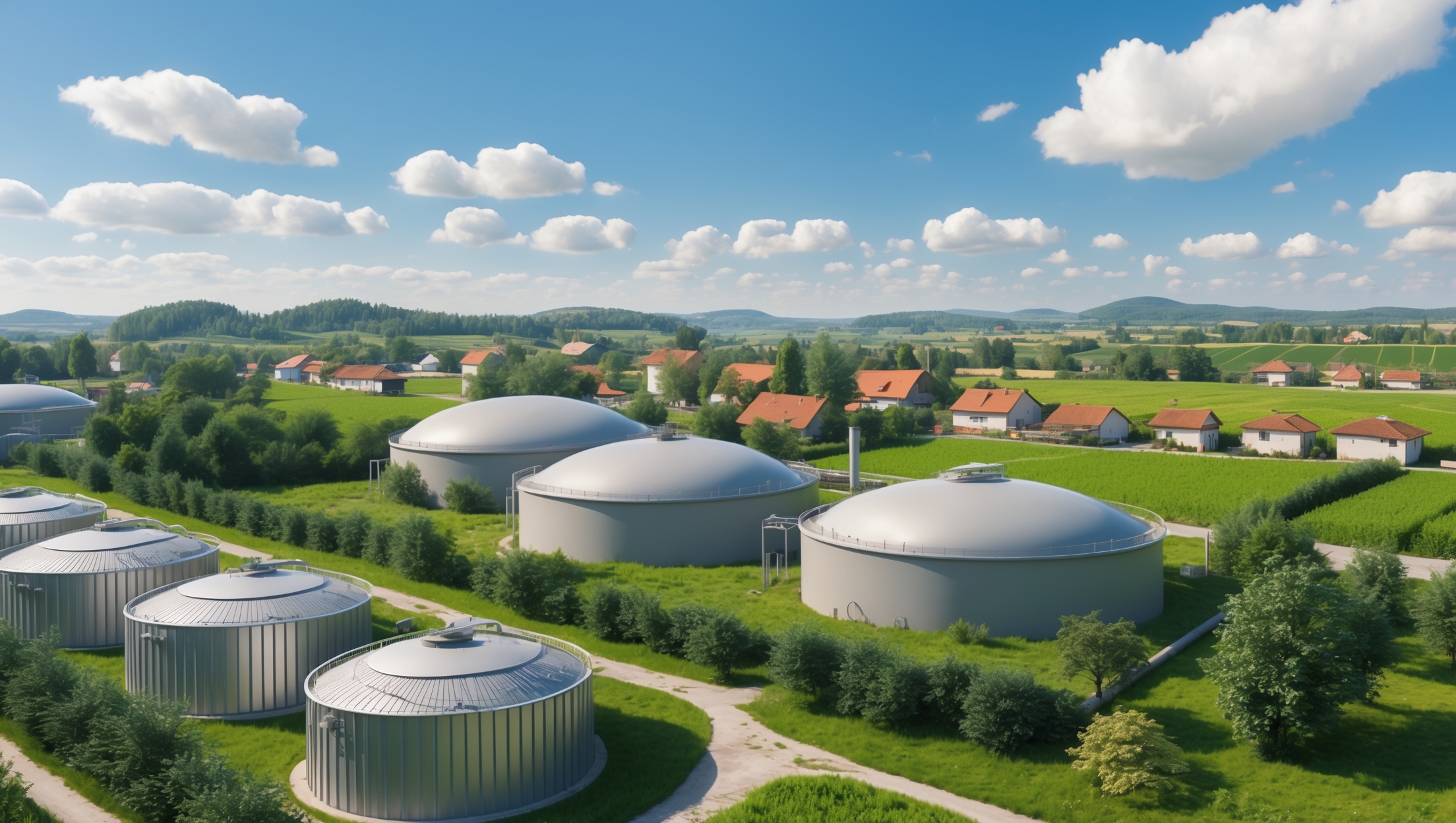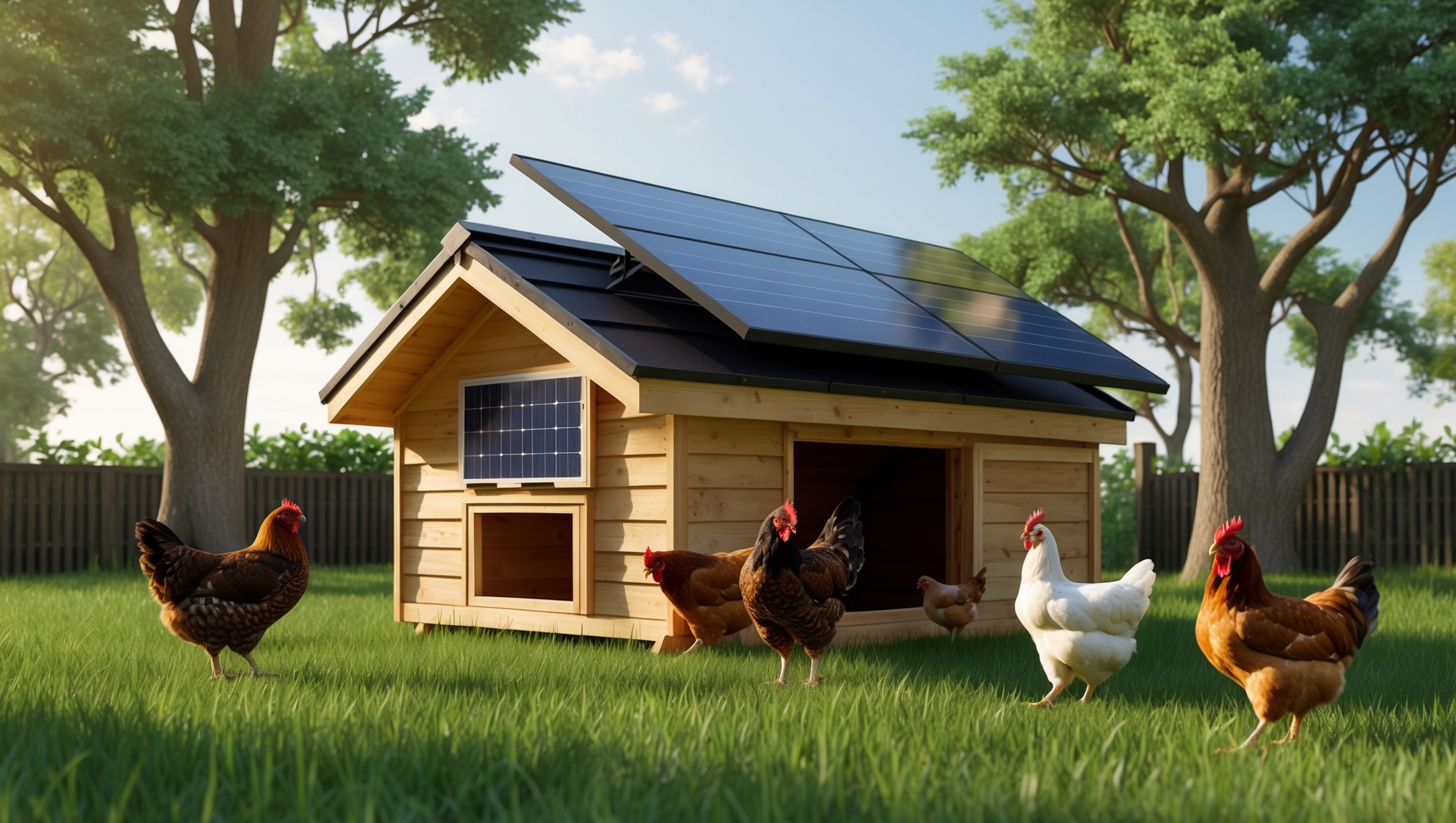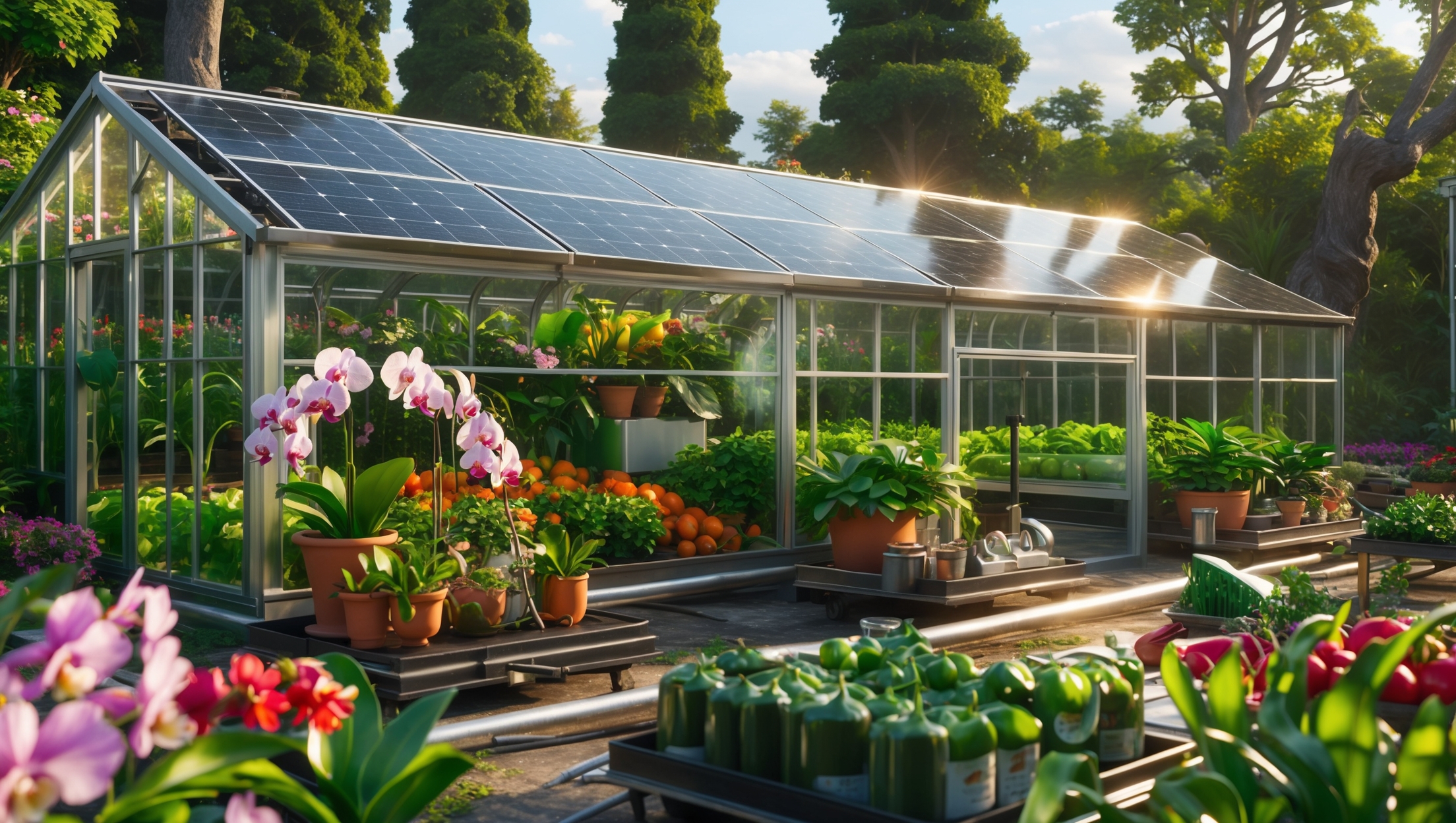Introduction
Turning waste into renewable energy might sound like science fiction, but for the small town of Riverview, it’s a reality that has redefined sustainability, energy independence, and local resilience. This detailed case study walks you through Riverview’s pioneering journey from conventional waste management to a closed-loop biogas energy system. You’ll discover the practical steps, technological choices, cost considerations, compliance challenges, and day-to-day operational lessons that made their transformation possible. Whether you’re a sustainability advocate, municipal planner, or simply curious about how communities can close the loop on waste and energy, this comprehensive look at Riverview’s experience offers actionable insights and inspiration for your own projects.
This isn’t a sanitized success story; we’ll explore the missteps, unexpected hurdles, and the ongoing maintenance realities that come with managing biogas at scale. If you’re looking for a roadmap to replicate—or adapt—this model in your own community, read on for a candid, expert account from the ground up.
Riverview’s Starting Point: Challenges and Motivations
Background & Existing Problems
Riverview, a town of 5,000 in the Midwest, faced mounting solid waste management costs and increasing pressure to reduce its carbon footprint. The local landfill was nearing capacity, and waste hauling fees were rising. Meanwhile, the town’s only energy provider had announced future rate hikes, further straining budgets.
- Landfill space was limited, pushing for costly expansions or transport.
- Organic waste (food scraps, agricultural by-products) made up 45% of the waste stream.
- Energy costs were unstable, with 12% annual increases projected.
- Community goals included carbon reduction, new jobs, and local resilience.
These converging pressures led town leaders and a local sustainability task force to explore biogas as a dual solution: renewable energy generation and waste reduction.
Planning and Feasibility: How Riverview Mapped Its Biogas Future
Tech Selection: Anaerobic Digestion
Riverview’s team began by researching waste-to-energy technologies. They chose wet anaerobic digestion, as it best accommodated their high-moisture organic waste (kitchen scraps, dairy manure, and yard clippings). Key criteria included:
- Ability to handle mixed-source organic waste
- Minimal odor and environmental impact
- Scalability for future expansion
- Viable by-product management (digestate for fertilizer)
Site Selection and Environmental Assessment
They evaluated three potential sites, ultimately selecting a 3-acre parcel at the town’s edge, well-buffered from residential areas and close to existing sewer lines. An environmental impact assessment addressed:
- Groundwater protection: lined digesters and leachate controls
- Air emissions: covered tanks, gas capture for all stages
- Traffic: routing for feedstock delivery and digestate transport
Cost Estimates and Budgeting
Initial feasibility studies estimated a capital cost of $2.3 million, with annual operating costs of $140,000. Funding sources included:
- State renewable energy grants ($800,000)
- USDA Rural Development loan ($1 million, 15-year term)
- Local bond issue ($500,000, approved by public vote)
Projected ROI was 9 years, based on avoided landfill fees, electricity sales, and fertilizer by-product revenue. A detailed budget breakdown included:
- Digester construction: $1.1 million
- Gas storage and cleaning: $400,000
- Electrical generator and grid connection: $350,000
- Site prep and environmental controls: $250,000
- Contingency: $200,000
Engineering the System: Design and Technology Choices
Feedstock Collection and Pre-Processing
Riverview implemented a separate curbside collection for organic waste, with 2,900 households and 40 businesses participating. The system includes:
- Color-coded bins for kitchen scraps and yard waste
- Weekly collection by a dedicated truck
- On-site sorting and grinding to achieve uniform particle size
Digester Design and Sizing
The facility features two 600,000-gallon continuously stirred tank reactors (CSTRs), allowing for redundancy and phased maintenance. Key features:
- Thermophilic operation (55°C) for rapid digestion and pathogen kill
- Automated mixing and temperature controls
- Biogas capture domes with dual-membrane covers
Biogas Conditioning and Utilization
Raw biogas (60% methane) is scrubbed of hydrogen sulfide, moisture, and particulates. The cleaned gas is:
- Fed into a 350 kW combined heat and power (CHP) unit, supplying 65% of the municipal grid’s base load
- Residual heat is piped to the town’s public works garage and a nearby greenhouse
Plans are underway to upgrade a portion of the biogas to renewable natural gas for vehicle fuel.
Digestate Handling
The leftover digestate is separated into:
- Solid fraction: composted and sold as organic fertilizer
- Liquid fraction: used as nutrient-rich irrigation on local farms
Permitting, Compliance, and Community Engagement
Regulatory Hurdles
Key permits included:
- Solid waste facility permit (state DEP)
- Air emissions permit (for CHP exhaust)
- Stormwater and groundwater protection plan
Compliance checks required demonstration of odor control, leachate containment, and noise mitigation. Public hearings were held to address resident concerns.
Community Buy-In and Education
Riverview’s success hinged on public involvement. Strategies included:
- Open houses at the pilot site with live digester demos
- Workshops for households and businesses on proper organic waste sorting
- A monthly newsletter detailing progress, challenges, and environmental benefits
Transparency about costs, potential risks, and expected benefits built trust and minimized NIMBY opposition.
Operational Realities: Lessons From the First Three Years
Startup and Commissioning
The first six months focused on gradual ramp-up of feedstock volume and close monitoring:
- Initial foaming issues required enzyme dosing and agitation adjustments
- Feedstock contamination (plastic bags, glass) was higher than expected, leading to additional pre-sorting labor
- Biogas yield reached 92% of projections by month seven
Routine Maintenance and Troubleshooting
Key maintenance routines included:
- Weekly inspection of gas-tight seals and pressure relief valves
- Quarterly pump and agitator servicing
- Monthly analysis of digester microbiology for early warning of process imbalances
The team faced one unplanned shutdown due to a faulty pH probe, highlighting the importance of sensor redundancy.
Feedstock Supply and Seasonal Variability
Yard waste spikes in spring and fall required temporary storage solutions and flexible feed rates. During winter, lower ambient temperatures increased heating demand, slightly raising operational costs but not affecting gas yield thanks to robust insulation and heat recovery from the CHP unit.
Digestate Utilization Successes and Setbacks
Local farmers quickly adopted the liquid digestate for corn and alfalfa fields, citing improved yields and reduced synthetic fertilizer use. However, one wet season led to runoff concerns and temporary restrictions until improved application protocols and buffer zones were implemented.
Financial Performance: Did the System Pay Off?
Cost Savings and Revenue Streams
- Landfill fee reduction: $110,000/year saved on hauling and tipping fees
- Electricity sales: $75,000/year (power purchase agreement with local utility)
- Fertilizer sales: $18,000/year from compost and liquid digestate
- Operations and maintenance: $140,000/year (staff, consumables, repairs)
Return on Investment
After three years, Riverview reported a net positive cash flow, with 85% of projected savings and revenues realized. The project remains on track for full payback within 9 years, with further upside possible from planned expansion into vehicle fuel production.
Key Takeaways and Replication Tips
What Riverview Would Do Differently
- Invest in higher-capacity pre-sorting equipment from day one
- Include sensor redundancy in critical process controls
- Design digestate storage for extreme weather variability
Essential Success Factors
- Strong local government leadership and cross-sector collaboration
- Transparent, ongoing public engagement
- Integration with local agricultural and utility partners
- Willingness to adapt and problem-solve as data emerges
Conclusion
Riverview’s biogas transformation is more than a technical achievement—it’s a case study in how small communities can take charge of their environmental and economic futures. By turning a waste management headache into a renewable energy asset, Riverview not only reduced landfill and carbon emissions, but also created jobs, stabilized their energy costs, and fostered a new sense of local pride.
For communities considering a similar path, Riverview’s journey reveals that success hinges on rigorous planning, stakeholder buy-in, and the flexibility to learn from early missteps. The town’s experience with feedstock variability, maintenance hiccups, and digestate management offers a realistic perspective on what it takes to operate a municipal-scale biogas facility. Their story also underscores the value of aligning energy projects with local agriculture, leveraging state and federal grants, and designing for long-term resilience in the face of climate and market uncertainties.
As more communities look for practical, cost-effective ways to close the loop on waste and energy, Riverview’s blueprint stands as both inspiration and a practical guide. The town’s willingness to share their challenges and hard-won lessons makes their story not only a model for replication, but a testament to the transformative power of sustainable innovation at the local level. If your community is seeking a greener, more self-reliant future, the Riverview case shows that with the right mix of planning, technology, and community spirit, turning waste into renewable energy is well within reach.





I noticed energy prices were increasing yearly in Riverview. How soon after implementing the biogas system did residents and the town itself see reductions in their energy bills or operational costs?
Residents and the town began noticing reductions in energy bills and operational costs within the first year after the biogas system was put in place. The case study highlights that once the system became fully operational, energy savings were reflected in monthly bills, and municipal facilities also experienced measurable drops in energy expenses during the first 12 months.
I’m really interested in how Riverview managed all the organic waste inputs, especially since 45 percent of their waste stream was food scraps and agricultural by-products. Were there challenges in collecting and sorting the organics efficiently, and if so, how did they handle it?
Riverview faced some early hurdles in collecting and sorting the large amount of organics, particularly food scraps and agricultural by-products. They addressed this by setting up separate collection bins throughout town and at farms, launching awareness campaigns about proper sorting, and coordinating closely with local businesses. The town also trained staff at the waste facility to better separate contaminants, which improved the overall efficiency of getting clean organics to the biogas plant.
Were there any major surprises with maintaining the biogas system after it was up and running? I’d love to hear about any unexpected challenges with day-to-day operations.
Yes, the article highlights a few unexpected challenges once the biogas system was operational. One surprise was the need for more frequent cleaning of the digesters than originally planned, as certain local food wastes created more residue. There were also occasional issues with sensor calibration, which sometimes led to temporary inefficiencies. The team had to adjust their maintenance routines and invest in better training for operators to ensure smooth day-to-day functioning.
Can you provide more detail about the types of technology Riverview evaluated before settling on their final biogas system? I’m curious if they considered smaller scale or modular options for towns with tighter budgets.
Riverview initially assessed a few different biogas technologies, including smaller-scale modular digesters designed for limited budgets and phased expansion. They looked at both wet and dry anaerobic digestion systems, plus containerized units that could be added as their needs grew. Ultimately, they chose a mid-scale, centralized anaerobic digester, but their evaluation process did include options suitable for towns with fewer resources or plans to scale up gradually.